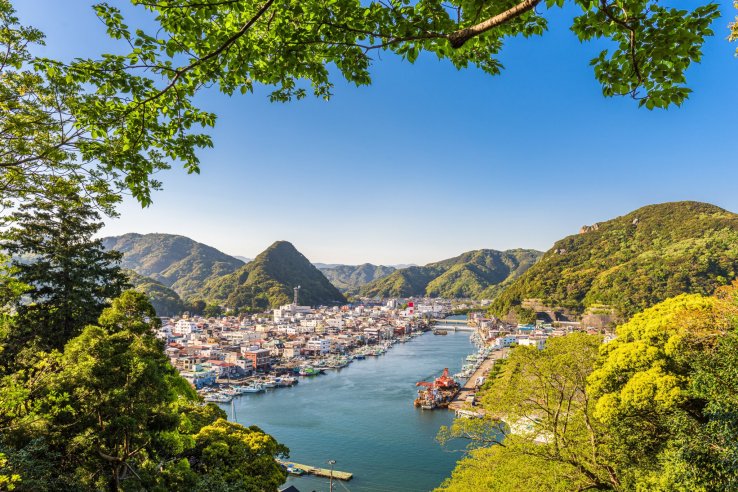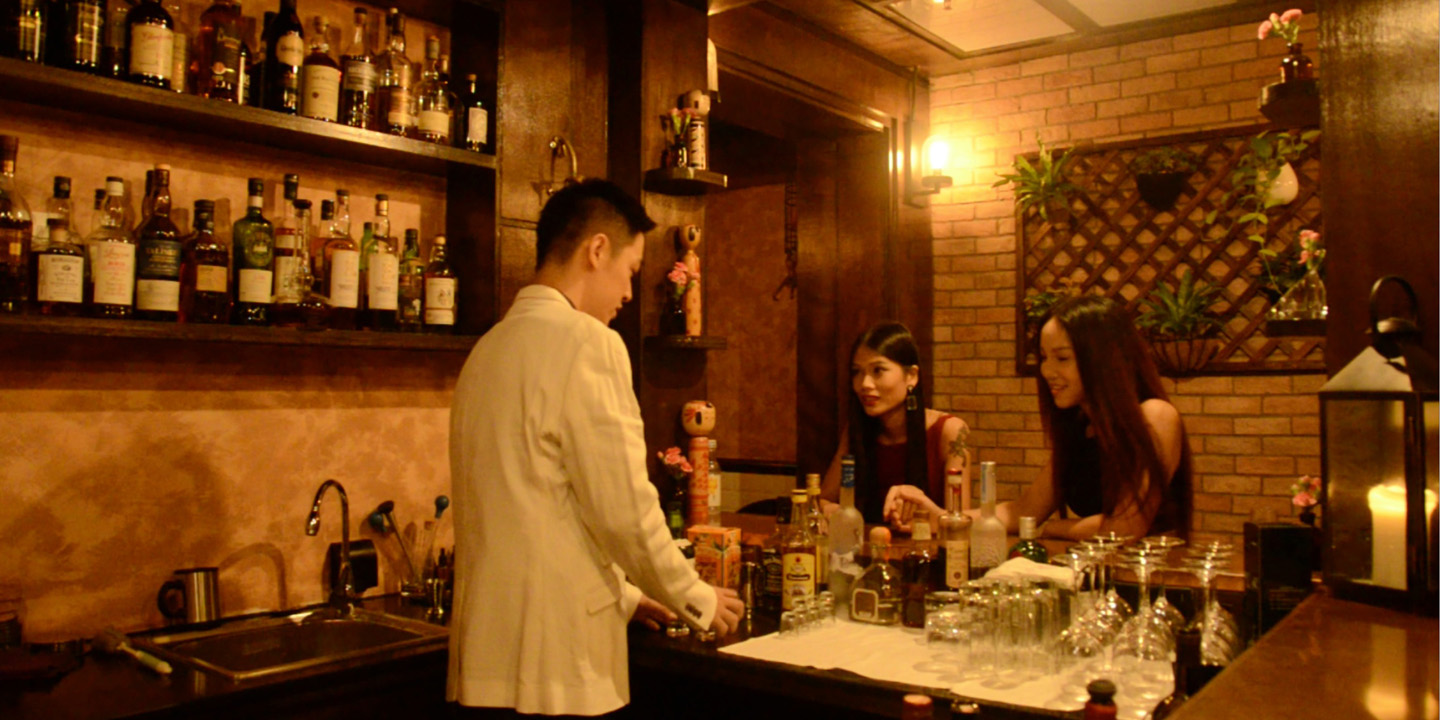A Pair Of Shizuoka's: Blackadder Raw Cask Single Malt Shizuoka 2018, Bourbon Cask, 3 Year Old, Cask No. 781 & Blackadder Raw Cask Single Malt Shizuoka 2018, Red Wine Cask, Japanese Barley, 3 Year Old, Cask No. 1357

Shizuoka Distillery is part of the first serious crop of craft Japanese distilleries to hit shelves since the 2000's, much of the credit of course goes to Ichiro Akuto, for having led the way and showing how it was possible to successfully raise a craft whisky distillery in Japan in spite of Suntory, Nikka and Mars' dominance.
What's interesting is that these distilleries aren't just making whiskies - they are actively looking for ways to meaningfully add to the discourse. At least one of the key themes that have emerged with these craft distilleries are that of making true blue 100% Japanese whiskies, which means completely using locally sourced ingredients. Of course, that's not an unheard of concept - Scotch is pretty much 100% Scotland-sourced, made and produced; and the same can be said of even the nascent Australian whiskies category. But for what it is worth, it is where the Japanese craft whisky scene is at and is thus far still a fairly new practice.

For a country with very popular whiskies, the space isn't considerably innovative.
Shizuoka Prefecture. (Image Source: Japan Travel)
Despite the massive popularity of Japanese whiskies, the space is actually not that much of a progressive or innovative category. Consider that it was only as recent as last year that T & T Toyama became the country's first local independent bottler of Japanese whiskies, and that updated Japanese whisky labelling regulations meant that the use of foreign whiskies had to be made clear. Most aren't even aware that the barley used in Japanese whiskies are predominantly imported from Scotland, and that Japan doesn't produce much barley for whisky production. A combination of rice being the major cash crop, a shortage of arable farmland due to Japan's geography, meant that any remaining barley is typically harvested for consumption rather than for the purposes of whiskymaking.
The category might be popular, but there's lots of cleaning up to do in order to protect its reputation and truly grow the space, which can only happen when quality and provenance is assured.

A handful of distilleries have largely dominated the scene for multi-decades, albeit it was only up until recently that they grew in global prominence. (Image Source: Lifestyle Asia Hong Kong)
Yet, it might be worth considering why it is that for a country so well-known for its whiskies, the category is oddly still very much playing catch up. The answer lies in the multi-decade dominance of the whisky giants Suntory and Nikka. Due to their hold on the domestic whisky market, there really wasn't much room for any newcomer, that is until Ichiro kickstarted Chichibu Distillery. With the market predominantly an oligopoly for ages, they could afford to go at their own pace, and keep things as they were, and there was little need for the likes of local independent bottlers bottling Japanese whiskies because neither Suntory or Nikka would have acceded to the request anyway. Also, while Suntory and Nikka have for a long time been the biggies, their global prominence is still very much a new phenomenon and it wasn't too long ago that you could pick up well-aged bottles of their whiskies pretty accessibly. They might have dominated the market, but for a long time they were but big fishes in a small koi pond.
I've even heard it said that funnily enough, the bars in Japan were never particularly interested in locally produced whiskies - they always felt that well-aged Scotch were superior in terms of value for money.

Ironically, Japanese bars aren't always fans of their own locally crafted whiskies - Scotch always seems more affordable, well-aged and accessible. (Image Source: Dekanta)
Regardless, it is worth applauding the efforts of the craft distilleries in Japan making a bid to change that perception. Today, I have the fortune of tasting a set of bottlings from Shizuoka Distillery that commemorates their parent company, Gaia Flow's, 10th anniversary. As the distillery shares close ties with independent bottler Blackadder, the pair of single cask bottlings were released under Blackadder's Raw Cask range.
What is eye-catching here is that one of the pair of bottlings - Cask No. 1357, which was also matured in a red wine cask, features the exclusive use of Japanese barley - a first for Shizuoka Distillery. That's a pretty big milestone, as the distillery has constantly outlined their desire to push towards 100% Japanese ingredients that go into their whisky. This bottling is a culmination of that effort and as I mentioned earlier, wields a broader symbolism of the craft whisky scene in Japan taking a big step forward - something that was unthinkable prior (shhh Suntory and Nikka still use imported barley).
As the Japanese whisky scene takes baby steps towards fully originating from Japan, the category can finally begin to realise the complete weight of its provenance and proudly own the premium associated with country of origin products that reflect the local terroir. Every sip, a sip of what Japan has to offer.
Let's go for it.

Blackadder Raw Cask Single Malt Shizuoka 2018, Bourbon Cask, 3 Year Old, Cask No. 781, 64.9% ABV - Review
Color: Chrysanthemum Tea, Light Marigold

Aroma: Gentle, creamy, almost confectionary. It’s aroma has an almost buttery texture, with a good dose of icing sugar and vanilla – think glazed doughnuts. There’s a light nutty note as well, reminiscent of marzipan or Chinese almond jelly. Wafts of farmhouse fields of wildgrass, more commonly associated with Lowland Scotch. Uncomplicated, approachable, almost too easy and alluring.

Taste: Consistent with its aromas – sweet, confectionary, buttery. A coating of vanilla icing sugar glosses over the palate, with a texture familiar to that of melted butter – well, it tastes of melted butter as well. This evolves into a buttermilk and then milk note, creamy and rich. The vanilla icing continues to interweave the palate, very well integrated. The grassiness doesn’t stray too far away – light hay and vegetal notes lay under the sweetness. Light touches of candied orange and mangosteen appear, even some young coconut flesh and custard apple. The same bits of marzipan and almond jelly too.

Finish: A more oaky astringency appears, adding a nice contrast to the otherwise confectionary top notes. The acidity strengthens to a medium-length crescendo before heaving and letting go into more vanilla icing sugar with a touch of cracked black pepper. The finish is long, with great warmth.

Blackadder Raw Cask Single Malt Shizuoka 2018, Red Wine Cask, Japanese Barley, 3 Year Old, Cask No. 1357, 61.1% ABV – Review
Color: Deep Auburn

Aroma: Grape skins, lightly tannic, ever so slightly punchy and tart. Grape-flavored Fanta Fizz, blackberries, pomegranates, cranberries, evolving into peaches and apricots – all sweet, with just a touch of acidity. It’s vibrant but yet remains calm, with no heat or sharpness to speak of; very impressive given the age and the use of wine casks. It is somewhat reminiscent of Calvados or apple brandy, a punchy apple cider of sorts perhaps. Honeyed sweetness lies below, pear juice, lilacs, and then a damp woodiness and some mustiness.

Taste: The orchard fruits remain perfumery but this is contrasted with more bright acidity and tartness and less fruity sweetness than you’d expect, instead it expresses something closer to maple syrup and butter. Prunes, raisins, pound cake, with a light touch of orange zest. Floral notes of lilac and gardenia play a hand in creating a potpourri perfumed note. There’s also a somewhat umami note that is evocative of bouillon cubes. It’s medium-bodied, somewhat viscous, but it’s flavors are much brighter than you’d expect, with a good amount of warmth. Subsequent sips showcases a sweeter side, with more on fruit jams and brown sugar, with the umami notes seemingly disappearing. There is a woodiness, but it’s fairly gentle and takes a quieter backseat role, although it remains apparent.

Finish: More drying, with the acidity taking a step forward, grape skins, still very much perfumery, with a good spoonful of honey, peaches and apricots. Sprinkle of cracked black pepper.

My Thoughts
While both whiskies were incredibly easy to drink, two things struck me most - the first was the demonstration of ability to rein in the use of a red wine cask that punches beyond its youth, and the second was the sheer charisma of the bourbon single cask.
The bourbon single cask was exceptionally smooth, full-bodied and well-integrated. It showcases traits I would have associated with a well-aged grain whisky if I had tasted it blind, but at the same time enticed with the flairs that made Lowland Scotch whiskies famous. It was at once sweet, buttery, grassy and floral, with a comforting warmth. Before I could even gather my thoughts, I was already down for another sip.
My Rating |
😙Incredibly easy to drink, I was down for another sip before I could think. It is exceptionally approachable, and a good cross between a well-aged grain whisky and a Lowland Scotch. |

Red wine casks are notoriously difficult to execute well - too young a whisky and the wine casks comes in too hot, punchy and often stings; too old and the whisky is completely overpowered by the red wine cask and ends up too muted and loses its vibrance. For a 3-year-old, this expression perfectly holds the horses back and shows no prickly hotness, while retaining much of the allure that wine casks promise. It was sweet, fruity and straightforward, with a degree of juxtaposition that gives it just enough complexity.
My Rating |
🏇This expression was a great example of a charging horse being properly reined in and taken control of to get to the finish line. It demonstrated excellent handling of the red wine cask, well beyond its youth. |

That said, while I appreciated both bottlings, I found myself enjoying the bourbon single cask more than the red wine single cask, as it was incredibly smooth and approachable, uncomplicated and yet incredibly easy to drink. Comforting was the word.
Yet, both whiskies while representing a great milestone not just for Shizuoka Distillery but the broader Japanese craft whisky scene, are still very much a work in progress and there is certainly more to be done; on both fronts. As the title of a famous craft Japanese whisky expression goes, it's still very much "On The Way".
Kanpai!

@111hotpot








